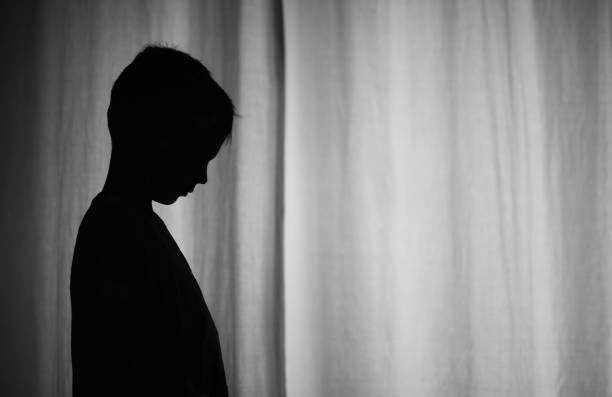There is a moment, quiet but sharp, when someone cracks a joke in a tense room—and the whole atmosphere shifts. Maybe it’s at a funeral. Maybe in a hospital waiting room. Maybe after someone’s voice breaks mid-confession. The laughter that follows is real, but uneasy. It does not come from joy. It comes from something older, deeper, more ancient than even language itself. It is the sound of survival.
Because sometimes, the funniest people in the room are the ones bleeding inside.
Humor, for many, is not just a tool. It is armor. A mask. A release valve for unbearable pressure. A translation of pain into something others can understand without having to feel it. It turns agony into something palatable. Tragedy into punchlines. It softens the blow.
But what happens when the laughter becomes the only language we know? When the jokes are so polished, so reflexive, that even we forget what they’re covering?
This is the unseen world of emotional camouflage—how we use humor to hide pain.
And how, if we’re brave enough, we can learn to laugh and heal.
The Comedian’s Curse
Robin Williams made the world laugh harder than most. But behind the twinkle in his eye and the voices that leapt from his soul was a profound loneliness. He could fill a room with joy, yet he couldn’t always feel it himself. When news of his death swept the world, people were stunned—not just by the loss, but by the irony. How could someone so funny, so full of life, be swallowed by sorrow?
But to many who have walked the tightrope between humor and hurt, it made perfect sense.
For those who live with pain—trauma survivors, the depressed, the anxious, the grieving—humor becomes both shield and sword. It helps them deflect attention, maintain control, create distance from their own vulnerability. If you can make others laugh, you can prevent them from asking questions. You can steer the conversation away from your wounds.
It’s a performance. Not a deception. A desperate, beautiful, human attempt to stay alive.
But performances can become prisons.
Laughter as a Defense Mechanism
Sigmund Freud, despite his many flaws, was one of the first to study humor as a psychological defense. He believed jokes allowed the unconscious to slip through the cracks—tiny flashes of hidden emotion masked in wit. According to Freud, humor was a way to express what we could not safely say aloud.
Modern psychology has since built on this idea. Laughter is now recognized as one of the brain’s most effective coping strategies. When we laugh, we release endorphins. Our stress response lowers. Our muscles relax. The amygdala—the part of the brain that registers fear—calms down.
In short, humor literally rewires our physiology.
But not all humor is the same.
There’s affiliative humor—the kind that brings people together. There’s self-enhancing humor—finding the light in dark times. And then there’s aggressive humor—used to mock or dominate. Finally, there’s self-deprecating humor—the kind that turns the pain inward, transforming personal wounds into punchlines.
And that last kind, for many, is the most familiar. It’s the laugh that tastes like blood.
The Smile That Says “Don’t Look Too Closely”
When someone makes a joke about their trauma, it can feel confusing. Should we laugh? Should we comfort them? Are they okay?
The truth is, they might not even know.
People who use humor to deflect pain are often deeply emotionally intelligent. They know what others can handle. They understand how to manage attention. They’ve developed a sixth sense for tension and discomfort, often because they’ve lived inside it.
They might joke about their anxiety before anyone else can bring it up. They might make fun of their body so no one else has the chance. They’ll laugh about their childhood neglect or failed marriage or spiraling mental health—but with such charm, such timing, that the pain vanishes beneath the punchline.
Or so it seems.
But somewhere, under the surface, is a small voice whispering: Please don’t look too closely. Please don’t ask what I’m not ready to say.
And when no one does, the silence becomes a kind of safety. And a kind of prison.
Family Roles and the Class Clown
In dysfunctional families, humor often becomes a survival role.
If one child is the caretaker, and another the rebel, there’s almost always someone cast as the clown. The one who lightens the mood. Who makes tense dinners bearable. Who distracts from the violence, or the addiction, or the silence no one knows how to break.
They learn early that humor gets them love. Or at least attention. Or at least safety.
But this role, while protective, can also be suffocating. Because eventually, the clown wants to be taken seriously. The jokester wants to cry without having to make it funny. But by then, the people around them have grown used to the mask. They expect levity, not vulnerability. And the cycle continues.
The hardest part? Sometimes even the clown forgets how to feel anything else.
Social Expectations and the Performance of Strength
There are certain people who are not allowed, by culture or community, to show pain.
Men are often taught that vulnerability is weakness. Women are taught to be pleasant, composed, likable. People of color are expected to be “resilient.” Queer people are told to “lighten up.” The marginalized, the silenced, the wounded—all of them hear, over and over again, in ways both subtle and loud: Don’t be too much. Don’t make others uncomfortable. Don’t fall apart.
So what do they do?
They become funny.
They craft their pain into stories. They learn to smile through the ache. They keep the room laughing, because if everyone’s laughing, no one can be afraid.
But while humor is a survival strategy, it can also become a way of disappearing.
The funny friend rarely gets asked how they’re really doing. The one who makes the room laugh is rarely given space to cry. And so they carry their sorrow like a secret, wrapped in a joke, hidden in plain sight.
The Thin Line Between Humor and Dissociation
There’s something surreal about making a room full of people laugh about your worst trauma. About telling a story of abuse or heartbreak or mental illness—and watching others burst into applause.
It feels powerful.
It feels safe.
It also feels… strange.
Many comedians and storytellers speak of a disconnection that happens onstage. They share the worst moments of their lives with strangers. They make it funny. They survive it again. But sometimes, they don’t feel anything.
This is emotional dissociation—a defense mechanism where the mind disconnects from painful feelings. It’s not a conscious choice. It’s what the brain does when things are too overwhelming to process.
Humor becomes the bridge. But if we never cross that bridge—if we stay on the stage, in the script, in the polished retelling—we may never truly feel what’s underneath.
And healing requires feeling.
The Danger of Not Being Believed
One of the quiet tragedies of using humor to cope is that people stop taking your pain seriously.
If you’re always joking about your depression, people might assume it’s not that bad. If you laugh every time you talk about your breakup or your eating disorder or your family trauma, they might think you’ve healed.
Even therapists can fall into this trap—misreading wit for wellness.
But being funny about your pain doesn’t mean you’re okay.
Sometimes it means the pain is so big, so unbearable, that comedy is the only safe way to bring it into the room.
We must learn to listen not just to what is said, but to what is felt.
Not just to the joke—but to the silence that follows it.
When Humor Heals
And yet—humor can heal. In fact, it often does.
Laughter brings oxygen to the body. It lowers cortisol. It activates the parasympathetic nervous system, helping us relax. It creates bonds. It makes space. It turns “me” into “we.”
In group therapy, in grief support, in hospital wards—humor helps people survive the unthinkable.
It’s not wrong to laugh in the dark. Sometimes it’s the only way through.
The difference lies in intention.
When humor is a bridge to connection, it can be powerful.
When it’s a wall to avoid emotion, it becomes a trap.
The key is integration. Learning to laugh and cry in the same breath. To hold joy and sorrow in the same story. To be both wounded and witty—without having to choose.
The Path to Authentic Expression
So what do we do, if we’re someone who hides pain behind jokes?
We start by noticing. When do we reach for humor? What emotions come before the joke? What would happen if we didn’t make it funny?
We can experiment—with honesty. Try saying something real, raw, unpolished—without cushioning it in laughter. See who stays. Notice how your body feels.
We can seek spaces that are safe enough for silence. Friends who ask twice. Therapists who don’t flinch. Communities that know how to hold tears.
We can still be funny. We don’t have to abandon that gift.
But we can stop using it to disappear.
Seeing the Jester’s Heart
And for those of us who love someone who copes this way—what then?
We learn to look deeper.
We stop assuming the laughter means they’re okay.
We ask, gently: “That was funny—but how are you really feeling?”
We honor the story behind the joke.
We let them be more than their performance.
Because inside every jester, there is a poet.
Inside every clown, there is a child who learned too early that making others laugh was the only way to feel safe.
Inside every “funny friend,” there is a heart that longs to be held—not just entertained.
The Courage to Be Seen
Humor is a gift. But it is not the whole story.
And healing begins when we remember that we are allowed to be seen in all our dimensions—not just the ones that make others comfortable.
You are allowed to be serious.
You are allowed to be messy.
You are allowed to cry in the middle of your joke and still be lovable.
You are allowed to stop performing.
You are allowed to be real.
Because the world doesn’t just need your laughter.
It needs your truth.






